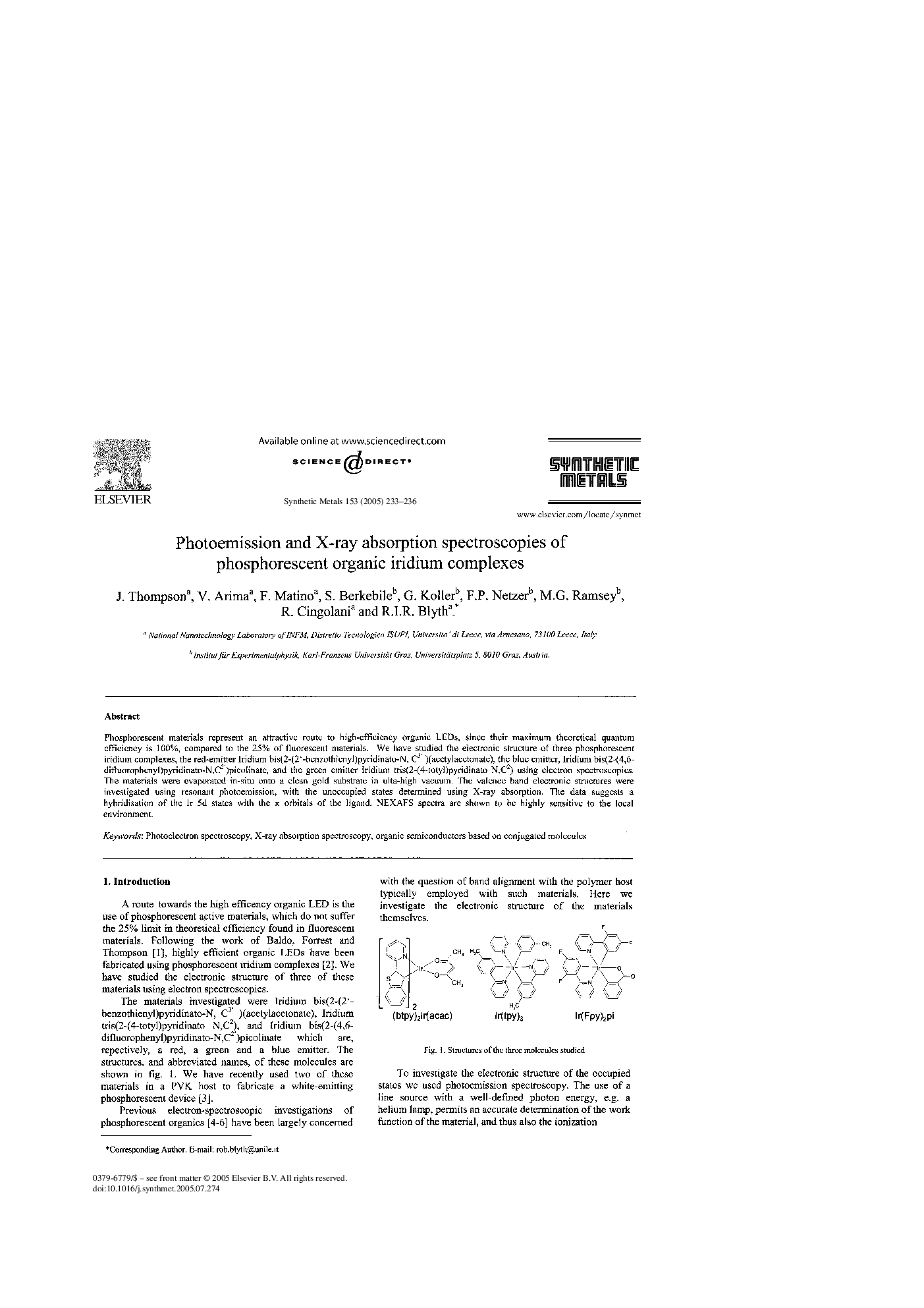| Article ID | Journal | Published Year | Pages | File Type |
|---|---|---|---|---|
| 9776345 | Synthetic Metals | 2005 | 4 Pages |
Abstract
Phosphorescent materials represent an attractive route to high-efficiency organic LEDs, since their maximum theoretical quantum efficiency is 100%, compared to the 25% of fluorescent materials. We have studied the electronic structure of three phosphorescent iridium complexes, the red-emitter Iridium bis (2-(2â²-benzothienyl) pyridinato-N, C3â²) (acetylacetonate), the blue emitter, Iridium bis(2-(4,6- difluorophenyl) pyridinato-N,C2â²) picolinate, and the green emitter Iridium tris (2-(4-totyl)pyridinato N,C2) using electron spectroscopies. The materials were evaporated in-situ onto a clean gold substrate in ulta-high vacuum. The valence band electronic structures were investigated using resonant photoemission, with the unoccupied states determined using X-ray absorption. The data suggests a hybridisation of the Ir 5d states with the Ï orbitals of the ligand. NEXAFS spectra are shown to be highly sensitive to the local environment.
Keywords
Related Topics
Physical Sciences and Engineering
Materials Science
Biomaterials
Authors
J. Thompson, V. Arima, F. Matino, S. Berkebile, G. Koller, F.P. Netzer, M.G. Ramsey, R. Cingolani, R.I.R. Blyth,
